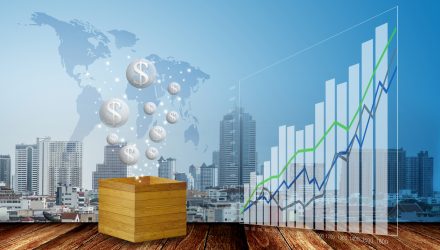By Smead Capital Management, ValueWalk
Dear fellow investors,
Late in bull markets there is often a pervasive excitement that arises. At that time, not all profit margins are created equal. Financial euphoria can cause distortions in industries and businesses. These distortions are due to the capital markets activities at play and investor willingness at the moment. The buyer of the 10-year Treasury note at 2.40% two weeks ago could be an example of this willingness. It seems plausible at the time for that buyer. Will they feel the same way in five years?
There is someone benefiting from this willingness. This willingness could be making the environment look better than it really is. We’d like to draw the picture of how the capital markets are distorting real or sustainable economics. We can see the effect of these distortions down to individual businesses today. We’d also like to look back to another time when euphoria caused economics to look better than they were, proving that certain businesses’ profit margins were mere distortions.
Home food delivery is one of the most interesting services of today. As a consumer, I love it. My family collects meals at our front door step that are pre-prepared but need to be put together. The biggest problem with these services is that they can mess up your order. If your normal FedEx delivery person isn’t working that day, the food can get mishandled and go bad. You get refunded, but that can’t be good for the owner of these food delivery companies. The most important thing we end up seeing with these companies, even if everything goes well for the customer, is that there is likely no way they can make money from their customers.
“The conventional view serves to protect us from the painful job of thinking.” – John Kenneth Galbraith
It can’t be as simple as capital markets are making it appear. We’ll attempt to go to second level thinking to get after what is actually going on. As Charlie Munger would tell us, “Invert, always invert.” To invert this, there are venture funds and public equity investors who are willing to put up risk capital for these businesses to grow their customers and revenue. These businesses say they can foresee a pathway to profitability at some point in the future. It’s in their investor presentations.
If we continue to think about the investors’ hopes for these businesses and the struggles these companies have, we recognize that there is one business making a pile of money from the predicament they’re in. The number one way that these businesses acquire customers is digital advertising. As evidence of this, if you go to a computer and Google “home food delivery”, you will find a myriad of sponsored advertisers.
Why is this a problem? If those money-losing food delivery businesses fail, they won’t be advertisers to Google anymore. What this means for Google is they have a certain percentage of their revenues and profits that are at the mercy of investment market fund raising activities, not long-term customers.
Corporate profit margins can help investors understand this in the bigger picture. The famous asset allocator Jeremy Grantham has argued vociferously over the last few years that corporate profit margins are historically high. Many point to low interest rates affecting margins. This is true, as low debt costs make margins look bigger than what they would be at higher interest rates. However, that doesn’t explain why today’s distortions could be the largest in history — bigger than 1999.
We believe capital raising by venture funds and public equity investors for these money-losing businesses distorts real economics today. These internet-related and conceptual businesses are operating in tangible services like taxis, video content and delivery of a variety of goods. Some are even producing profit margins based on GAAP accounting. The practicality of these businesses are of no consequence. It is the fund raising required to sustain what they do which maintains the profit margins. Where else are margins bigger than they would be if this financial euphoria ended?








